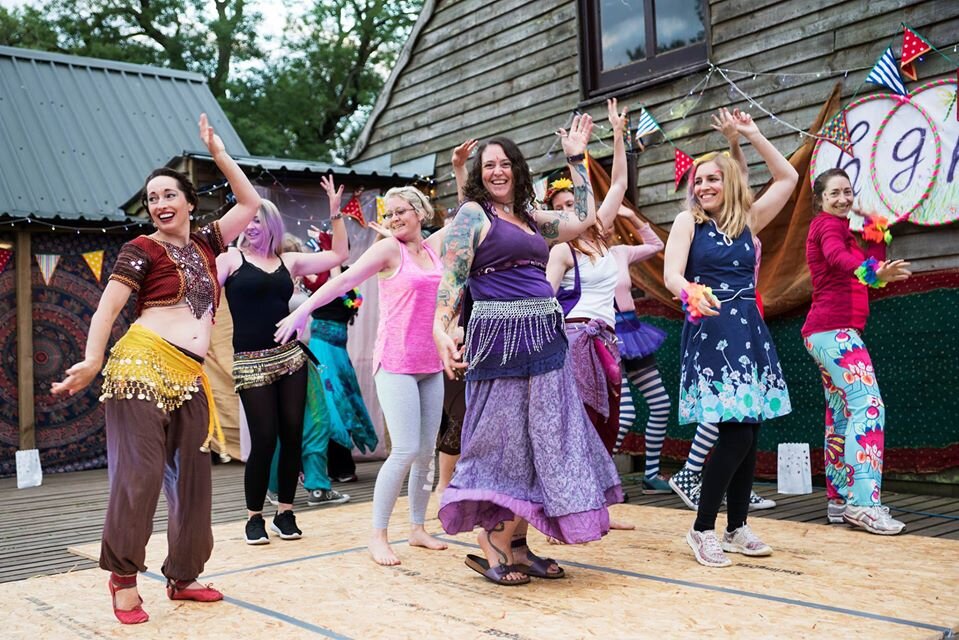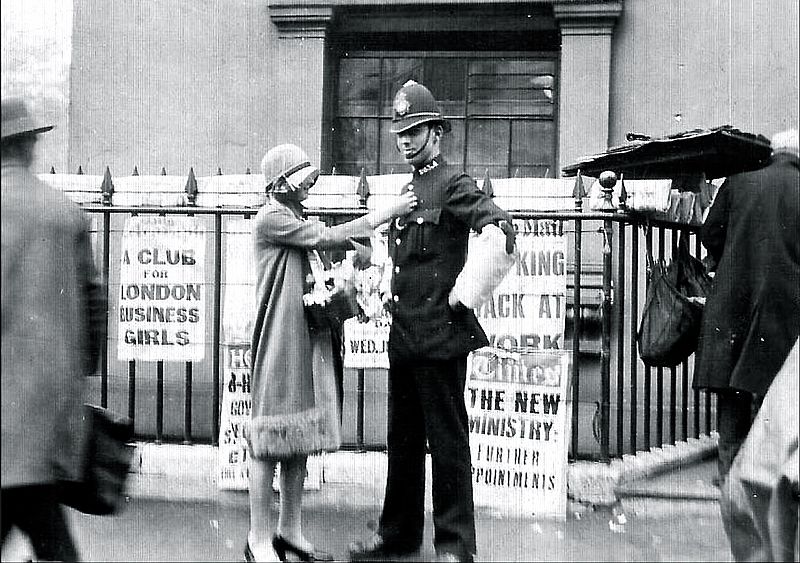
BLOG
Read about all things Charleston
Kids Charleston Classes in Queens Park this August.
Join Fiona and Jess every Monday for Kids Charleston Classes in Queens Park this August.
Join Fiona and Jess every Monday for Kids Charleston Classes in Queens Park this August.
Learn the moves and rhythms of this playful dance style. The lessons are designed to develop children’s musicality, confidence and teamwork. With imaginative themes and music to match this is an upbeat class where children will develop their dance skills in fun and sociable setting. Every Monday, weather permitting.
Timetable
4-4:45pm: 5-7yrs
5-5:45pm: 8-11yrs
£5 drop-in session. Payment on arrival. Cash or card accepted.
New Videos Releases: June Course Routines
Our videos of our completed routines from our June term are now ready to view!
Thank you so much to everyone who joined us our June term for another great set of online courses.
It’s the highlight of our week teaching these sessions so we wanted to say a huge THANK YOU for supporting our small business during these strange times and continuing to dance with us. We have now edited the end of course videos together as a little keepsake from the courses.
Level 2: Everybody Loves My Baby
Level 3: Thrift Shop
If you would like to get involved in any of our classes with us just click here: https://mycharlestondance.com/online
Charleston & Bollywood - Free Taster Sessions via Zoom. 11 & 13 July
Join our Free Taster Classes this July
Join our Free Taster Classes
Charleston Class - 11 July 11:00am
Join our free taster Charleston dance classes on 11 July 11-11:40am. A 40 mins Charleston online session via Zoom to get you energised and ready for the weekend with Elena
Bollywood Class - 13 July 12pm
Join our free lunchtime taster Bollywood dance classes on 13 July 12-12:40pm. A 40 mins Bollywood online session via Zoom with Fiona
Zoom login details to join both sessions
https://us02web.zoom.us/j/83839866599?pwd=azB6bFdQc1JwdXJwNFlXeVVvU042Zz09
or
Meeting ID: 838 3986 6599
Password: MYC2020
Bollywood with Fiona!
Bollywood dance is a style I fell in love with when I lived in London where I discovered an Indian nightclub. I quickly learnt the iconic ‘Lightbulb’ move and before I knew it I was wiggling my hips and singing along in Hindi, not having a clue what the words meant! Like Charleston it is a fun and cheeky dance which doesn’t take itself too seriously.
Bollywood dance is a style I fell in love with when I lived in London where I discovered an Indian nightclub. I quickly learnt the iconic ‘Lightbulb’ move and before I knew it I was wiggling my hips and singing along in Hindi, not having a clue what the words meant! Like Charleston it is a fun and cheeky dance which doesn’t take itself too seriously.
Born from the Bollywood film industry the dance blends classical Indian dance styles with R&B and hip hop to make a energetic, flirtatious and fun dance. There are no defined rules in Bollywood but you do get to explore some of the facial expressions and gestures that come from classical Indian dance.
Having styled it out at the nightclub I discovered a wonderful teacher called Polly Rae, she wasn’t Indian but she danced with a Bollywood troupe and her upbeat manner really brought the dance to life. I remember she would say “Bollywood is cheesy, come on let’s enjoy the cheese” as we all danced with massive grins on our faces.
In India, I was really lucky to work with another teacher called Archana Sufiana a mesmerising dancer and performer. Her in depth knowledge of classical Indian and Indian folk dance really helped bring the narrative of each dance piece alive. I picked up so many little nuances from her in terms of hand positions, using the eyes and the face to tell story. Together we did a number of performances which challenged me as a dancer but were so such fun to do.
If you’re wondering about the level then I would say Bollywood is a good entry level dance as you can use simple moves in a way which looks effective. It’s very cardio, with some slightly silly moves that just make you giggle. I am currently very excited about the move in this routine which I’ve called “Karate Chopping Crab” you’ll know it when you see it!
I’ve been teaching Bollywood for over 8 years at Festivals and for Hen Parties. It’s always a winner. I know it might feel like a massive genre leap to go from Charleston to Bollywood but these two styles have much in common. So if you want to smile from ear to ear, do the lightbulb and flirt a little bit through dance please join us for the next 4 week online course starting on the 14 July 7pm.
Fiona
Move of the Week: Tick Tocks
This week we are teaching you Tick Tocks as our Move of the Week. A simple, but also very popular move in the Charleston.
This week we are teaching you Tick Tocks as our Move of the Week. A simple, but also very popular move in the Charleston.
Start off with your feet parallel. Keep your knees bent at all time and go really low.
If you want to travel to the right start by turning in your knees and feet and while turning out again slide a bit to your right side.
Turn your knees and feet in again, but this time while turning out lift your left foot off the floor. Make sure that you keep the position which you had on the floor and really flex your foot.
Then repeat the same to the left. Knees in and out, while moving to your left, but this time lift your right foot up.
Now to the arms. Hold them like a marionette and just mirror your knees and this is all you need to know for the Tick Tocks.
What's on this July: Charleston & Bollywood
We have some fun things coming up in July! Four new online courses including Beginners and Open Level Charleston. A musicals themed course based on 'Thoroughly Modern Millie' and a Summer special: Bollywood with Fiona! One course is £36 or top up by a tenner and get any two for £46.
|
Move of the Week: The Hitchhike
You will never be without a lift with the hitchhike move, a travelling step which uses the classic thumb signal for hitching a ride.
You will never be without a lift with the hitchhike move, a travelling step which uses the classic thumb signal for hitching a ride.
The footwork is a simple step behind, so your travelling backwards. Its good to start by stepping back and bouncing. You need have a small pulse in each step you take.
Once you are comfortable with the pulse, add the swivel to your footwork. Each time you step back lift the heels out and when you place the foot, bring the heels in to create the swivel motion.
Interestingly a few of our students said they learnt to swivel through practicing this move.
Once the feet are moving in the right direction you can add the arms. When you travel, the same arms as leg is moving. So when you bring you right foot back, lift your right arm over your shoulder. The arms are moving as if your wiping your back with a towel.
You can also stylise the move by gently tilting the head of each move.
Flappers & Feminism
The early decades of the 20th century were a battleground for women, in terms of political and legal reform. But women were also testing out another arena of emancipation: their bodies. As fashions grew simpler and skirts rose higher, reaching knee-length by the late 1920s, women found new physical freedom.
Read extracts from Judith Mackrell’s article on our blog. Original article can be found here
The early decades of the 20th century were a battleground for women, in terms of political and legal reform. But women were also testing out another arena of emancipation: their bodies. As fashions grew simpler and skirts rose higher, reaching knee-length by the late 1920s, women found new physical freedom.
Josephine Baker dancing the Charleston at the Folies-Bergère, Paris
On the dancefloor, too, women were displaying an alarming lack of modesty, with the social dances that began spreading through the west just before the first world war. Driven by the rhythms of American ragtime, the Bunny Hug, the Turkey Trot and the Grizzly Bear.
These encouraged dancers to kick up their feet, rock crazily from side to side and lock their swaying pelvises together. To the young these ragtime dances were part of a new "budding freedom", a sign that "Victorianism" had finally lost its grip.
Nightclubs had begun to appear in London in 1912, these dark and crowded basements promised a cocktail of illicit thrills: smoking cigarettes, wearing lipstick, drinking Pink Ladies – and dancing.
In the 1920s, ragtime was superseded by the wayward jangle and bounce of the Charleston and by the pert, buttock-flourishing naughtiness of the Black Bottom. Zelda Fitzgerald, famously the inspiration for her husband F Scott's fictional flapper heroines, was also a wicked exponent of the decade's jazz dances.
If dances were getting wilder, so too were morals. Between 1914 and 1929, the divorce rate doubled in the US and surveys reported that premarital sex was rising even faster. The promiscuity of young women caused alarm, particularly in Britain. The Daily Mail warned that the number of "superfluous" females could be a "disaster to the human race" (clearly the Daily Mail’s attitudes haven’t advanced much, as they are still spouting the same sexist bullsh*t today!)
Young flappers may have thrown off the tyranny of the corset, but they discovered the new tyranny of dieting! Which still lives on today!
The flapper represented a new spirit of emancipation. If women were to follow their "inner compulsion to be individuals", they had to throw off their shackling inheritance of obedience, whether to the puritanical tenets of old-school feminism or to the sentimentalised duties of marriage and motherhood. It wasn't hardcore politics but, on the dancefloor at least, these women of the 1920s embodied Bromley's views. As they shimmied their shoulders and swivelled their hips, they were released into a brief but deeply subversive world – a world of freedom.
This blog was put together from extracts of Judith Mackrell’s article on the Guardian. Read Full article here
Move of the week: Side to side kick Charleston variations
A side to side kick move is a Charleston variation that derives from the solo jazz world. It is commonly seen in lindyhop as a hand to hand Charleston, danced in partners, but here is the footwork done as a solo move.
A side to side kick move is a Charleston variation that derives from the solo jazz world. It is more commonly seen in lindyhop as a hand to hand Charleston, danced in partners, but here is the footwork done as a solo move.
As a breakdown you need put kick your right foot on the diagonal to the right corner then change direction and switch your feet to face the opposite corner. Place your right foot on the ground and switch it with your left then kick to the left corner.
The key to this step is keeping your weight over the body, feet flexed at all times and a light bounce throughout the movement.
To make the movement seem larger, create large circles with your arms to lift the upper body and fill the space. This makes the step more eye catching and fills the space.
For more Charleston tutorial videos take a look at our YouTube channel and subscribe for the weekly videos.
Blog: You're Never Too Old to Dance
Dance is traditionally seen as a young person's game but the rise in dance classes for adults means the landscape is changing for those who want to dance as a hobby. MyCharleston run dance classes for adults and we are passionate about giving people a positive experience of dance whatever their age or level. We spoke to two of our Charleston dancers about their views on taking up dance later on in life.
Dance is traditionally seen as a young person's game but the rise in dance classes for adults means the landscape is changing for those who want to dance as a hobby. MyCharleston run dance classes for adults and we are passionate about giving people a positive experience of dance whatever their age or level. We spoke to two of our Charleston dancers about their views on taking up dance later on in life.
Diana took ballet lessons throughout her childhood but gave up when she was eighteen. She decided to go back to dance in her forties, having seen the Charleston on 'Strictly'.
“You're never too old to start dancing and the wonderful thing about the Charleston is that it’s an individual dance. It doesn’t matter if you're a beginner or more advanced because you can work at your own pace. The basics of Charleston are actually very simple; step forward and tap, step back and tap and you're doing the Charleston! You can gradually build on those nice simple elements. I think it’s a dance you don’t have to be afraid of, it’s not a scary type of dance at all”
Patricia comes from a family where music and dance were very much a part of home life. However it wasn’t until she was in her forties that she started dance classes.
”I think dancing at any age is so beneficial. It's wonderful. Coming to class is lovely - we’re all different ages, everybody’s just getting what they want from it and working at their own ability. It’s something that I love doing and something everyone can benefit from. I hate the gym - it’s not for me I did try it and was thoroughly bored. I think dancing at any age is wonderful”
The average age in our dance classes is mid-forties and the age range is from eighteen all the way up to eighty. As teachers, we find age isn’t a barrier to learning dance, if anything the older you are the more relaxed you are about making mistakes and just giving it a go. Young or old, the enjoyment and benefits of dancing are the same for everyone.
Diana said ”I love it, it’s so incredibly good for you it improves your flexibility, your strength, your heart and your brain. For me the biggest benefit of dancing is having fun. To move to music is just so much more fun than going to the gym or running. You almost get the benefit without realising it because you're concentrating on getting the steps and listening to the music and your teachers instructions. In class you suddenly realise you’re really sweating, short of breath and you’ve had all this exercise without it being such a big deal or too serious”.
Dance works on all planes of movement, making it a complete body and mind workout. The coordinated and rhythmic movements help keep the brain young too. Diana says:
“The benefit for the brain is wonderful because remembering the routines is quite a challenge and it’s so satisfying when you do remember it and you get it right and maddening when you do it wrong, so I really enjoy it from that point of view”.
The dance classes we run are friendly, relaxed and the emphasis is always on having fun. There are many people who love dance but have never attended a class. As adults, there are limited opportunities to just let go and move to music. Choosing dance as a hobby is a great way of keeping fit, socialising and learning a new skill.
Patricia recommends to anyone who is thinking of taking up dance
“Just give it a go, if you love dancing and you love music, just try it. People are really welcoming especially if they come to our classes and you’ll just get hooked as I have with Charleston. It's fantastic”
So is there an age when a dancer has to hang up her shoes? I asked Diana how long she expects to keep dancing.
”I hope to be the oldest women Charlestoning in the world! I feel great and of course the more you do the better you feel. It’s lovely to have your new Charleston buddies, there is a really nice mix of ages in the class. So yeah, I’ll just keep dancing as long as the legs will take it”.
To find our a local class with us, click here

















